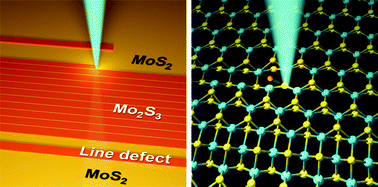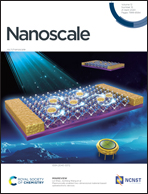Deriving 2D M2X3 (M = Mo, W, X = S, Se) by periodic assembly of chalcogen vacancy lines in their MX2 counterparts†
Abstract
Structural defects in crystals are generally believed to disrupt the symmetry of the pristine lattice, but sometimes, they can also serve as the constituent elements of new structures if they are arranged in a well-ordered pattern. Herein, choosing 2D transition metal dichalcogenides (TMDCs) as a model system, we successfully fabricated a novel group of 2D materials-M2X3 (M = Mo, W, X = S, Se) via the periodic assembly of chalcogen vacancy lines in their corresponding MX2 monolayers (such as MoS2). Our ab initio calculations further revealed that these monolayer M2X3 materials electronically exhibit quasi-direct narrow band-gap semiconducting characteristics, e.g., Eg = 0.89 eV for Mo2S3, and show ultra-high phonon-limited room-temperature carrier mobility up to ∼27 000 cm2 V−1 s−1 for electrons in Mo2S3. The emergence of these novel M2X3 materials expands the existing 2D family and provides new platforms for both fundamental research and practical applications, and the approach via the periodic assembly of ordered defects should also be applicable to other 2D materials.



 Please wait while we load your content...
Please wait while we load your content...